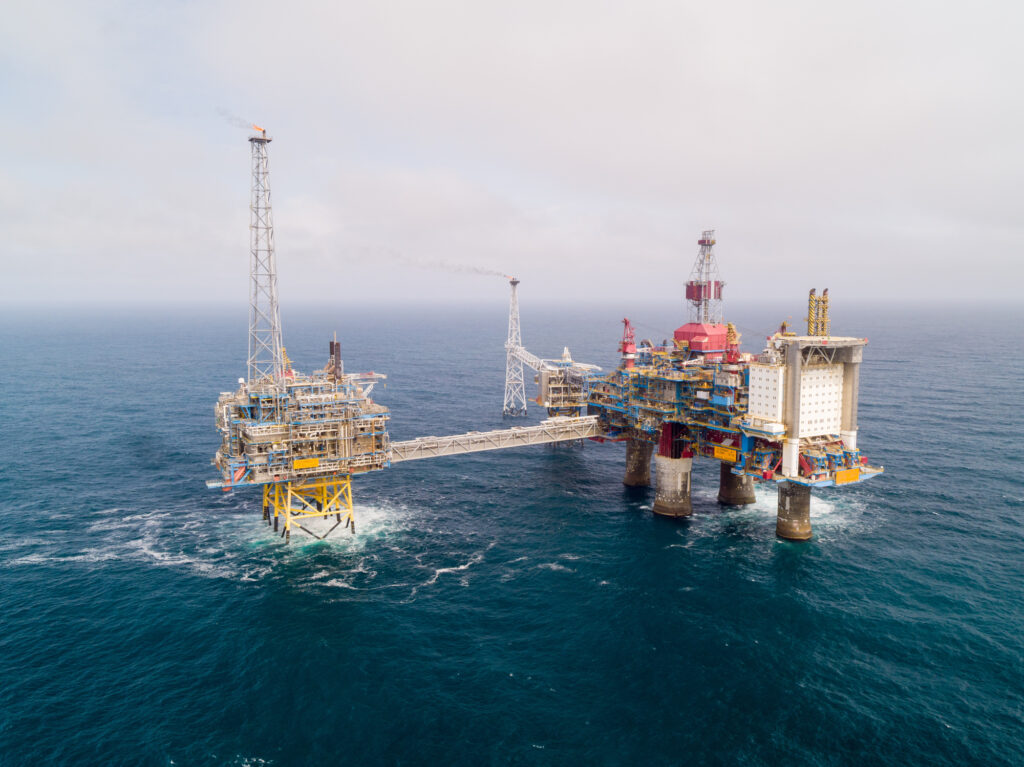In September, Equinor inaugurated the Northern Lights offshore carbon transport and storage project near Bergen, its joint venture with TotalEnergies and Shell, which it says will store 1.5 million tonnes of industrial CO2 emissions a year from a cement works and waste-to-energy plant on the Norwegian mainland.
The majority of the project is financed by $1.19 billion in funding from the Norwegian government and an additional $141 million grant from the European Union’s Connecting Europe Facility fund.
Even if Equinor reaches its 2035 goal of storing 50 million tonnes of CO2 a year — a more than 50 times increase over the CO2 the company captured and stored in 2023 — it would only offset about a fifth of the 262 million tonnes of CO2 emitted from its operations and burning its oil and gas last year, according to company data reviewed by DeSmog.
Methodology and Sources
Equinor initially reported that it had captured and stored a cumulative total of 4.2 million tonnes of CO2 over 2017-2019 according to a tally of yearly data from the company’s online sustainability data (see initial report: “Carbon Dioxide (CO2) Captured and Stored”; see current report for comparison).
The company does not break down the amount of CO2 captured and stored from its two active CCS facilities at the Sleipner and Snøhvit gas fields in its sustainability data, but DeSmog was able to estimate the amount using a separate Equinor document related to the Snøhvit project. (see: “Informasjon til allmennheten om risiko og beredskap: Hammerfest LNG”, page 4).
A chart in this document (“CO2 Lagring” or “CO2 Storage”) indicates that Snøhvit was operating at a capacity of about 0.7 million tonnes of CO2 a year over the period 2017-2019, which equates to a cumulative total of 2.1 million tonnes of CO2 stored. Subtracting that figure from the total of 4.2 million tonnes of CO2 that Equinor reported storing during the period gives the remainder stored at Sleipner, also 2.1 million tonnes.
Equinor later revised its estimate for the cumulative total of CO2 stored over the period 2017-2019 for both sites down to 3.7 million tonnes, with all changes attributed to the flawed flow transmitter at Sleipner. That implies that Snøhvit would have still captured a total of 2.1 million tonnes of CO2 during this period, but Sleipner would have only captured a revised 1.6 million tonnes.
The difference between the 2.1 million tonnes of stored CO2 initially attributed to Sleipner and the revised figure of 1.6 million tonnes suggest that Equinor initially over-reported CO2 storage by about 31 percent during the period 2017-2019. Given that the company provided figures rounded to the hundred thousand, it was impossible to arrive at a more precise percentage.
DeSmog was not able to obtain specific CO2 capture and storage totals for Sleipner or Snøhvit in 2020, when Equinor initially reported 1.1 million tonnes of total CO2 stored, before revising that figure to 0.9 million tonnes. However, the total amount of over-estimation attributable to Sleipner — 0.2 million tonnes of CO2 — suggests a similar percentage of over-reporting as the period 2017-2019.
Equinor’s sustainability dataset also indicated over-reporting for Sleipner in early 2021, but DeSmog was unable to find comparable data to calculate the size of the overestimate. The company appears to have revised the totals sometime in 2022, based on a comparison of its yearly sustainability reports.
Equinor’s webpage “CCS: Carbon capture and storage — making net zero possible” says that the company captures and stores about 1 million tonnes of CO2 a year at Sleipner and its webpage “Snøhvit” indicates that the company captures and stores about 0.7 million tonnes of CO2 a year at the field.
Equinor’s yearly emissions total of 262 million tonnes of CO2 was calculated by adding up the company’s Scope 1, Scope 2, and Scope 3 emissions reported in its 2023 sustainability data.
DeSmog shared its calculations with Equinor. The company did not respond.
Source link : http://www.bing.com/news/apiclick.aspx?ref=FexRss&aid=&tid=6720eee1de79408b8cb5a153365cb04d&url=https%3A%2F%2Fwww.desmog.com%2F2024%2F10%2F28%2Fnorways-equinor-admits-it-over-reported-amount-of-carbon-captured-at-flagship-project-for-years%2F&c=9143018163645535754&mkt=en-us
Author :
Publish date : 2024-10-28 03:36:00
Copyright for syndicated content belongs to the linked Source.
